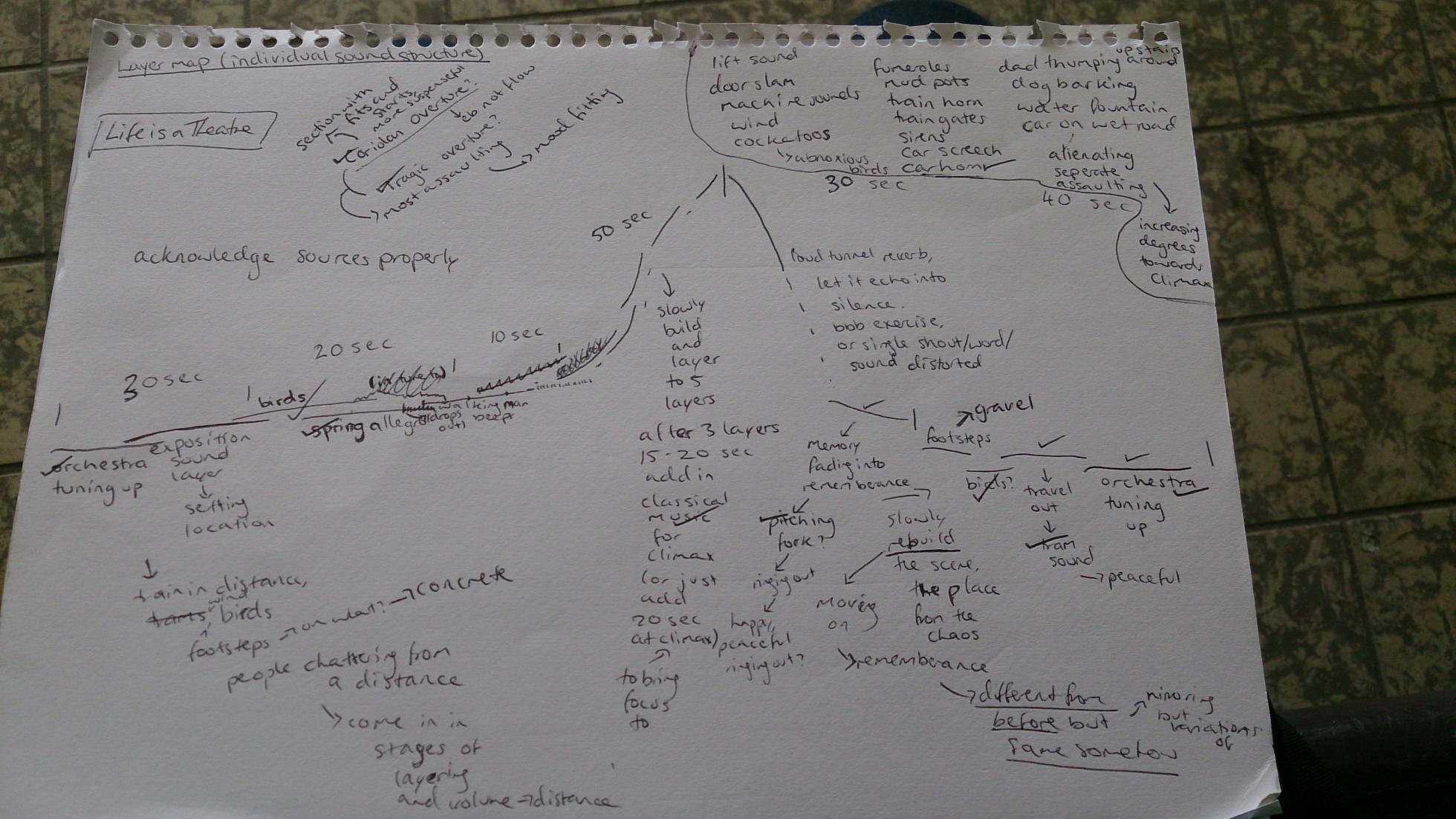
For our third assignment we had to create two additional pieces for our ’24 Hour’ folio, this time focusing on field and studio sound production. The following is my take on an experimental field piece; ” Life is Theatre”.
A three act short experimental sound piece featuring the serendipitous moments of beauty, pain, conflict and sorrow found in our everyday lives.
Featuring Vivaldi’s ‘Spring Allegro’ as performed by John Harrison with the Wichita State University Chamber Players, available from the free music archive.
Under CC BY SA.
For this piece I really wanted to get across the way in which a theatre piece emotionally evolves over a period of time, essentially each definitive and distinct act of the play. Due to the nature of the piece, using a wide variety of sounds to produce a steady emotional progression, there had to be a great deal of control over the sounds I recorded and used, their timbre in particular, in order to create the desired effect. To do this I mapped out the progression I wanted the piece to take and brainstormed sounds I thought had the right kind of timbre for that section.
The section I had the most trouble finding sounds for was the climactic section, as this required the largest variation in both amount and timbre. However, I feel that I managed to gather enough variations in timbre through my sounds, as the progression in this sequence is like a parabola and eases the listener in.
As the piece is about “the theatre of life” I decided to layer classical music at all of the major sections, as classical music gives an air of theatre, as it is often associated with the theatrical, extravagant and high culture nature of theatre. I used Vivaldi’s ‘Spring Allegro’ to represent the ‘happy bubble’ section at the beginning, birds still heard over the top to emphasise that the sound of birds chirping and other such small moments in life are what inspire such theatrical and musical pieces. Beethoven’s ‘Corolian Overture’ is layered in towards the end of the climactic sequence, to emphasise the hectic and theatrical nature of the climax, timing sounds to the notes towards the end. And a tuning fork is used after the hollow, reverbed, echoing field sound (the point of sadness after the climax) to give the idea of remembrance and moving on, as the piece then returns to the exposition sounds of the footsteps, the birds and the public transport, only this time, instead of a train, it is a tram, and instead of concrete they are walking on gravel. The piece ends the same way it began, with the orchestra tuning up, ready to go again.
I was inspired in part by the way the Kitchen Sisters create their pieces, such as ‘Tupperware’, and the way director Robert Altman created his films, both layering sound upon sound so they are fighting each other to be heard, forcing the audience to pick what they hear instead of delivering valuable information. This instead creates a mood and a presence, using voice and sound for their musical and lyrical qualities.
I was also inspired by ‘Desert Mischief’ by Kerry Fletcher, the smooth transitions and lyrical nature of the field sounds used helped me to envision my own piece and the way that I could possibly match, mix and pair varying sounds together to both create a narrative as well as a flowing emotional composition.
